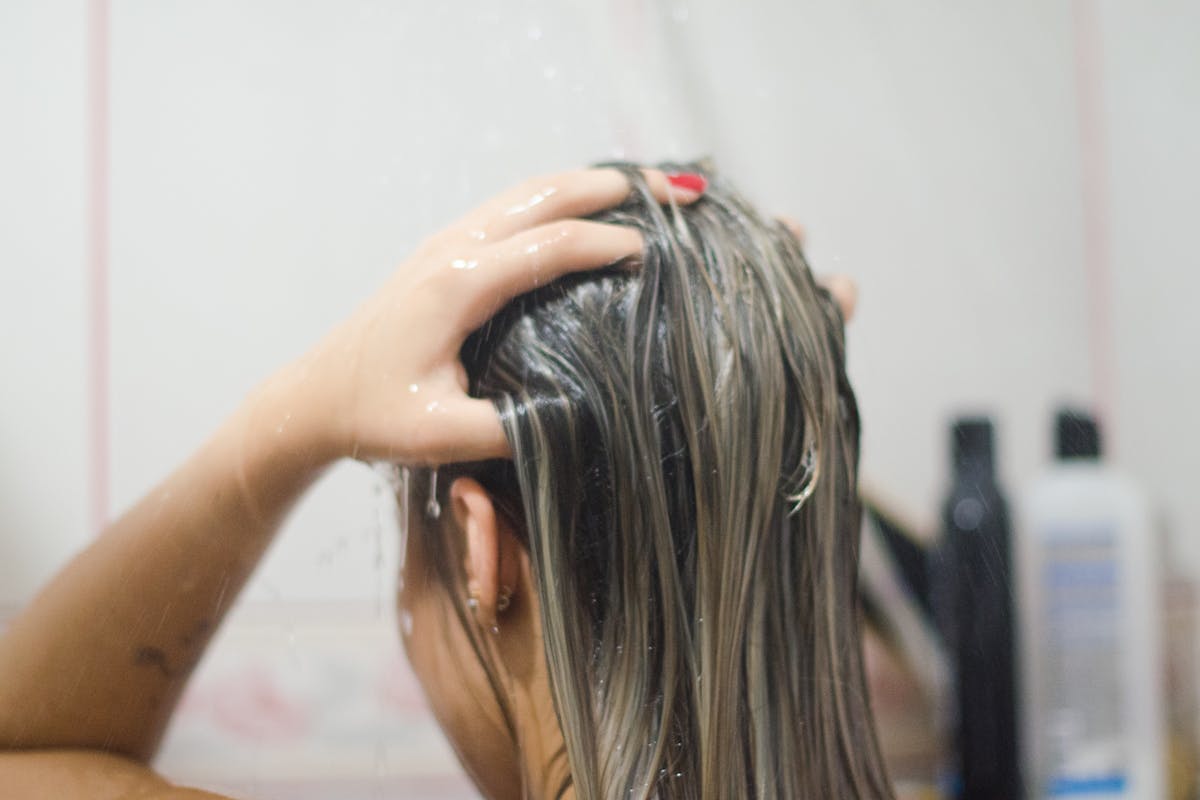Let’s face it: Wash day for our hair is usually not something we’re necessarily jumping for joy about. In fact, for many, it’s downright dreaded. But it’s super necessary and a must to achieve and maintain healthy hair. But what if we told you that you may be washing your hair wrong? That you’re not giving it the right love it needs and leaving it neglected once you step out of the shower?
This Is The Right Way To Wash Your Hair
7 Min Read

Get hair, health, and science news delivered right to your inbox.

Medically Reviewed by
DR. MELISSA ANZELONE, N NDUnfortunately, you might be, but fear not: Ahead we have expert advice on how to simplify your wash day. Learn how to wash your hair the right way for your desired end goal and kickstart some serious hair growth.
Step 1: Shampoo
Depending on what hairstyle or texture you’re looking for, how often you shampoo your hair may vary. People with oily hair types may require shampooing on a daily basis, while people with dry hair or dry scalp might only want to shampoo their hair a few times a month. “No-pooing,” or washing hair without commercial shampoo, has also risen in popularity; however, following the “no-poo” method may lead to build-up or breakage. You’ll want to shampoo your hair at least once a month, at a minimum. “Every scalp needs a solid reset from time to time,” New York City hairstylist Aja Marian-Smith says. Opt for a sulfate-free shampoo or alternate between using shampoo and co-washing to maintain your hair’s moisture, giving your scalp the fresh start it needs (whether that’s once a day, once a week, or once a month). After shampooing, rinse for at least 15 seconds to ensure the shampoo has made it through your hair and any lingering product has been properly washed out.
Step 2: Condition
Above all other steps, conditioning is a must. It’s important to replenish your hair with the moisture it loses, especially during the shampooing phase. The vast majority of hair types and textures call for a hydrating conditioner, which should be left on the hair for 15-20 minutes before rinsing for optimal results. “If you’re really trying to penetrate the hair shaft and scalp, I suggest applying a plastic cap and sitting under a hooded dryer,” Smith adds. “The heat really activates those moisturizing agents, opens the hair cuticle, and fosters a safe space for more moisture to enter the hair.”
And when it comes time to rinse out your conditioner, water temperature is dependent upon desired style. If you’re looking to wear your hair in its natural state, rinsing with cold water is a better idea, as it closes the cuticle and retains a bit more moisture. If you want more volume, rinsing your hair with warmer water might be your best bet.
Step 3: Add Leave-In Products
No matter your texture or hairstyle, some form of leave-in after washing is imperative. If you’re wearing your hair natural, apply a more emollient leave-in with a thicker texture to the hair. If you’re planning on heat manipulation and need more lightweight movement to the hair, apply a small bit of hair serum, distributing throughout the scalp and strands. And while people’s hair texture may vary, when they should apply their leave-in is consistent: Leave-in products should be applied when the hair is still wet, as the cuticle is open and able to receive nourishing ingredients.
So whether you wash your hair every day, every month, or sometime in between, the common factor is a need for proper nourishment and moisture. So find the best shampoo and conditioning products for your hair, wash your hair following these guidelines, and always remember to take your Nutrafol to help continue nourishing your hair, even when it’s not wash day.